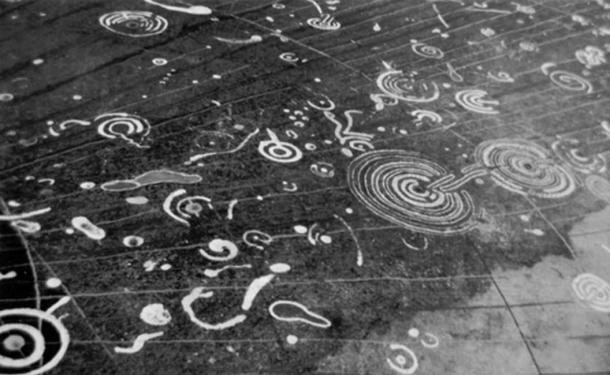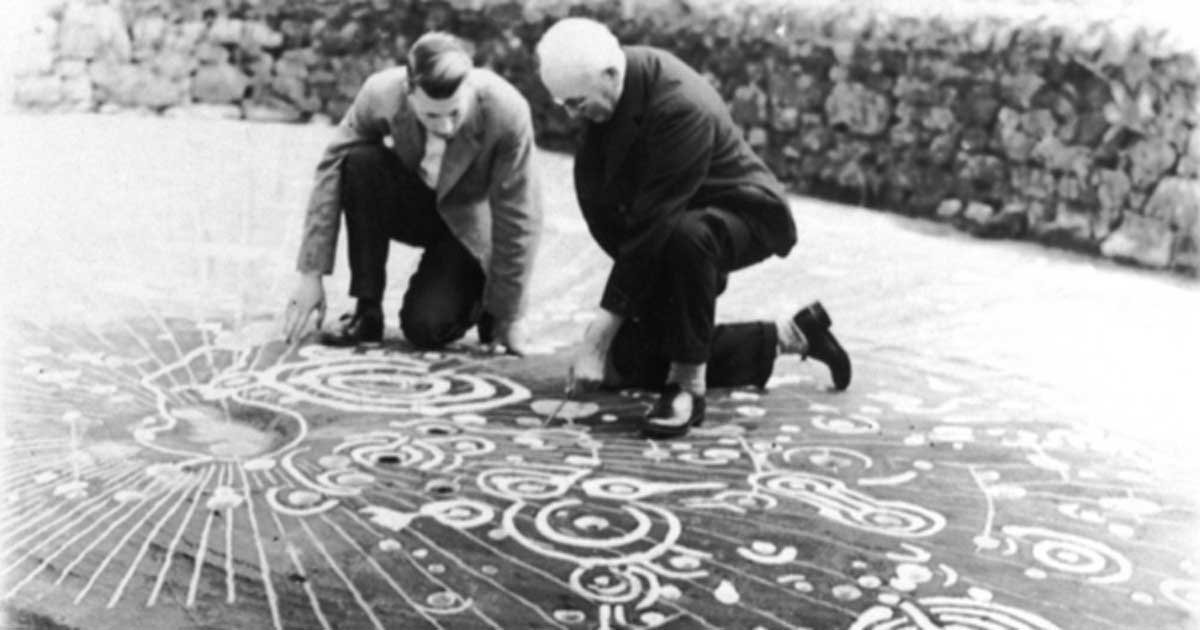
© Royal Commission on the Ancient and Historical Monuments of Scotland. Detail of cup and ring markings on the Cochno Stone.
With dozens of grooved spirals, carved indentations, geometric shapes, and mysterious patterns of many kinds, the Cochno Stone, located in West Dunbartonshire, Scotland, is considered to have the finest example of Bronze Age cup and ring carvings in the whole of Europe. Yet, for the last 50 years it has laid buried beneath several feet of earth and vegetation in what was a desperate attempt at the time to protect it from vandals. However, the famous stone is set to be unearthed once more to finally embark on an in-depth study of its enigmatic symbols in the hope of learning some of its secrets.
The Scotsman reports that the enormous stone will be uncovered over the next three weeks and archaeologists will then use 3D-imaging technology to make a detailed digital record of the stone's markings in the hope that it
"will provide more information on the stone's history, purpose and the people who created it about 5,000 years ago".The stone, which measures 42ft by 26ft, was first discovered by the Rev James Harvey in 1887 on farmland near what is now the Faifley housing estate on the edge of Clydebank. It is covered in more than 90 carved indentations, known as 'cup and ring' marks.

© Royal Commission on the Ancient and Historical Monuments of Scotland.The Cochno Stone bears what is considered to be the finest example of Bronze Age 'cup and ring' carvings in Europe.
Cup and ring marks are a form of prehistoric art consisting of a concave depression, no more than a few centimetres across, carved into a rock surface and often surrounded by concentric circles also etched into the stone. The
decoration occurs as a petroglyph on natural boulders and outcrops, and on megaliths such as the slab cists, stone circles, and passage graves. They are found mainly in Northern England, Scotland, Ireland, Portugal, North West Spain, North West Italy, Central Greece, and Switzerland. However, similar forms have also been found throughout the world including Mexico, Brazil, and India.
The cup and ring marks on the Cochno stone, which are believed to date back to 3,000 BC, are accompanied by an incised pre-Christian cross set within an oval, and two pairs of carved footprints, each foot only having 4 toes. Because of the array of markings on it, the
Cochno Stone has been recognised as being of national importance and designated as a scheduled monument.Read the remainder of the article
here.





The work that these archaeologists are doing is great and I am sure backed by the academics of the west. Unfortunately, in New Zealand, petroglyph are not studied by mainstream academia because they are a political hot potato. I have witnessed a rock, bearing petroglyphs, laying on the high tide mark at Manu Bay near the coastal town of Raglan. Shame on the local historians and archaeological society for not being more forthright.